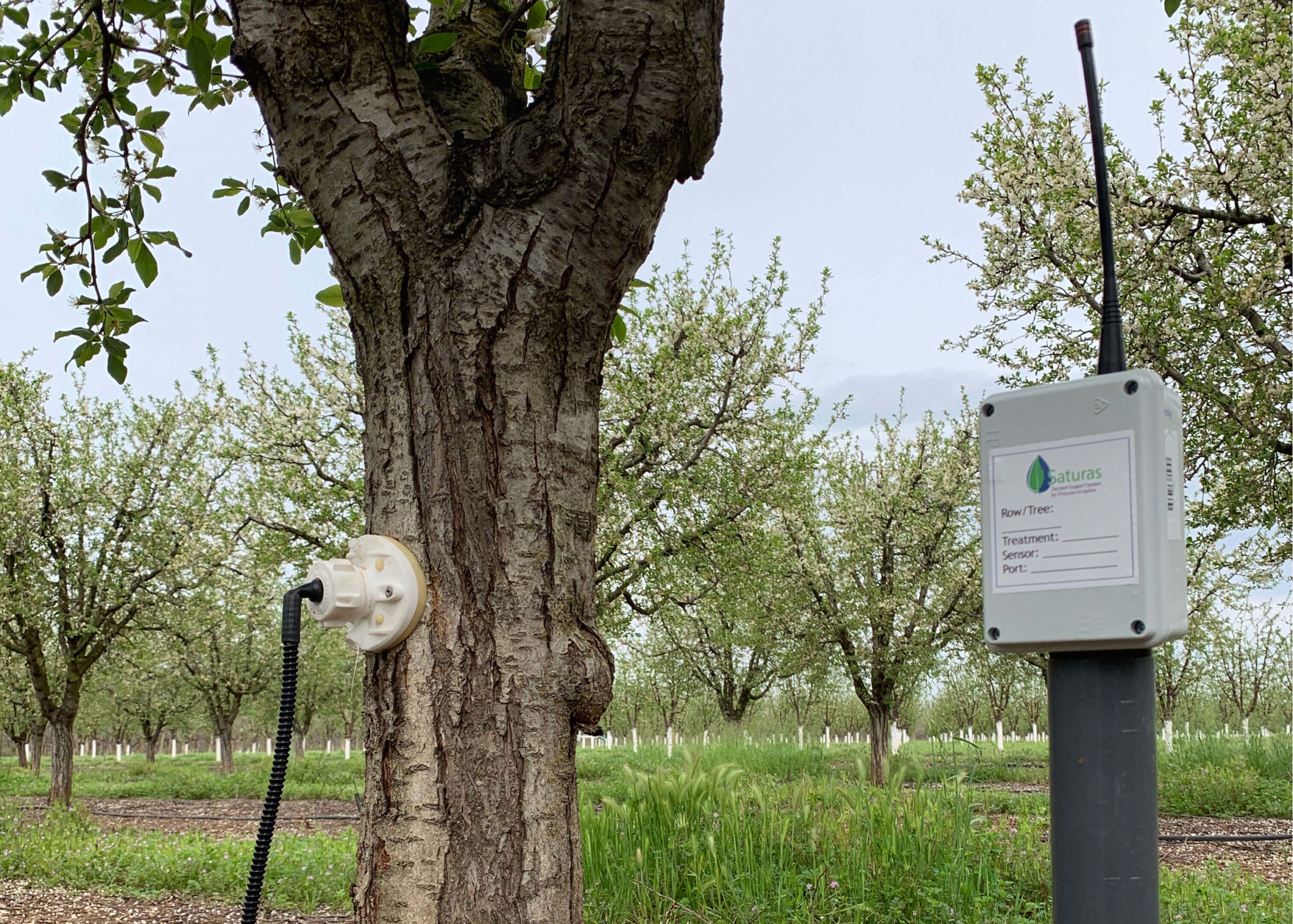Saturas: IoT makes trees more fruitful
Improving yield quantity and quality for orchard crops
ABOUT
Can trees tell us what they need?
Most of today’s precision agriculture solutions use networked sensors to measure field conditions: what are the characteristics and depths of the various soil layers? How much water does each hold? How much nitrogen does it contain? When to irrigate? When to fertilize?
Saturas, an agricultural technology company based just a few miles north of Nazareth in one of Israel’s crucial growing regions, goes deeper. The company’s purpose-built sensors, designed specifically for orchard crops like fruits and nuts, are embedded directly into the tree to give growers exceptional moment-to-moment insight into their crop’s water status.
The insight is available to the grower via user interface platform, serving as a decision support system for optimizing irrigation.

Saturas' General Manager for CaliforniaSoracom allows us to manage and monitor all our sites on one platform, and check the data usage and activity status of each site in one interface. Furthermore, Soracom’s pay-as-you go approach reduced our costs dramatically. The model of paying only for the data we use works very well for us.
CHALLENGE
Growing more while using less
Orchard crops like fruits and nuts make a crucial contribution to the global food supply and represent billions of dollars in economic value. In the U.S. alone, fruit and nut crops generate $30 billion or more each year.
These crops are nutritionally dense and highly valuable. They’re also quite thirsty. In California, almonds alone account for 10% of total state water use. But it’s estimated that as much as 20% of that use is the result of limited and imprecise measurement systems. In the absence of reliable information it’s reasonable for growers to overwater just to be safe. And all that overwatering doesn’t just waste precious water. Too much water may produce lower-quality fruits and nuts and could risk soil contamination due to increased runoff.
SOLUTION
Better measurement for better health
Stem Water Potential (SWP) is an important measure of plant health, equivalent in many ways to a human’s blood pressure, and scientifically recognized as the most reliable indicator of overall plant stress. SWP is also an important practical tool for irrigation management. However, the only way to measure SWP is to use a manual device developed in the 1960s for general agricultural use across many different crops.
So while SWP is potentially the most valuable measure available to a grower for crops’ water status and a practical tool for irrigation management , it’s been impossible to achieve the frequent, automated, affordable, easy to use readings. Saturas resolves this challenge with StemSense™, a unique, miniature sensor embedded directly in the tree to continuously measure SWP using a cellular data connection. StemSense™ is the equivalent of having a plant scientist at the orchard every day to measure SWP manually along with data-analysis for the growers’ specific crop and goals.
Interestingly, plants may exhibit horticulturally beneficial responses at moderate levels of water stress. In other words, plant can benefit from water stress. StemSense™ helps growers to better manage the stress level of their crop at different developmental stages without harming the crop and thereby, optimizing overall plant health, improving plant quantity and quality and increasing energy and water usage efficiency.
For example, in almond production, StemSense™ can assist the grower to impose mild to moderate crop water stress during the hull split phase to increase yields by reducing fungal diseases (hull rot) . In prune production, StemSense™ can help growers produce moderate, controlled water stress two weeks before harvest, which promotes sugar accumulation in the fruit and reduces drying costs at the fruit dehydrator.
In walnut production, StemSense™ lets growers induce controlled water stress to reduce the risk of root diseases and promote the development of healthier root systems.
WHY SORACOM
Centralized management and cost savings
When Saturas first entered the U.S. market, they naturally engaged with a large telecom operator. However, they discovered practical challenges quickly, especially related to billing management and cost. Receiving individual bills for each SIM was a back-office headache, and in one particularly memorable month text messages related to usage were sent directly to trees in the field.
Based on a referral from a colleague in the AgTech space, Saturas began testing with Soracom. As Anat Bujanover, Saturas general manager for California explains, Soracom’s developer-focused approach to IoT connectivity proved to be a very good fit for a startup with ambitious plans for growth.
“Soracom allows us to manage and monitor all our sites on one platform, and check the data usage and activity status of each site in one interface. Furthermore, Soracom’s pay-as-you go approach reduced our costs dramatically. The model of paying only for the data we use works very well for us.”

FUTURE PLANS
Focus on California
California’s central valley figures heavily in Saturas’ growth plans, and the company is currently expanding its California team and customer base.
Central Valley growers account for two-thirds of total U.S. fruit and nut production and understand the value of SWP measurement, making the region a perfect fit for Saturas’ highly targeted growing technology.
